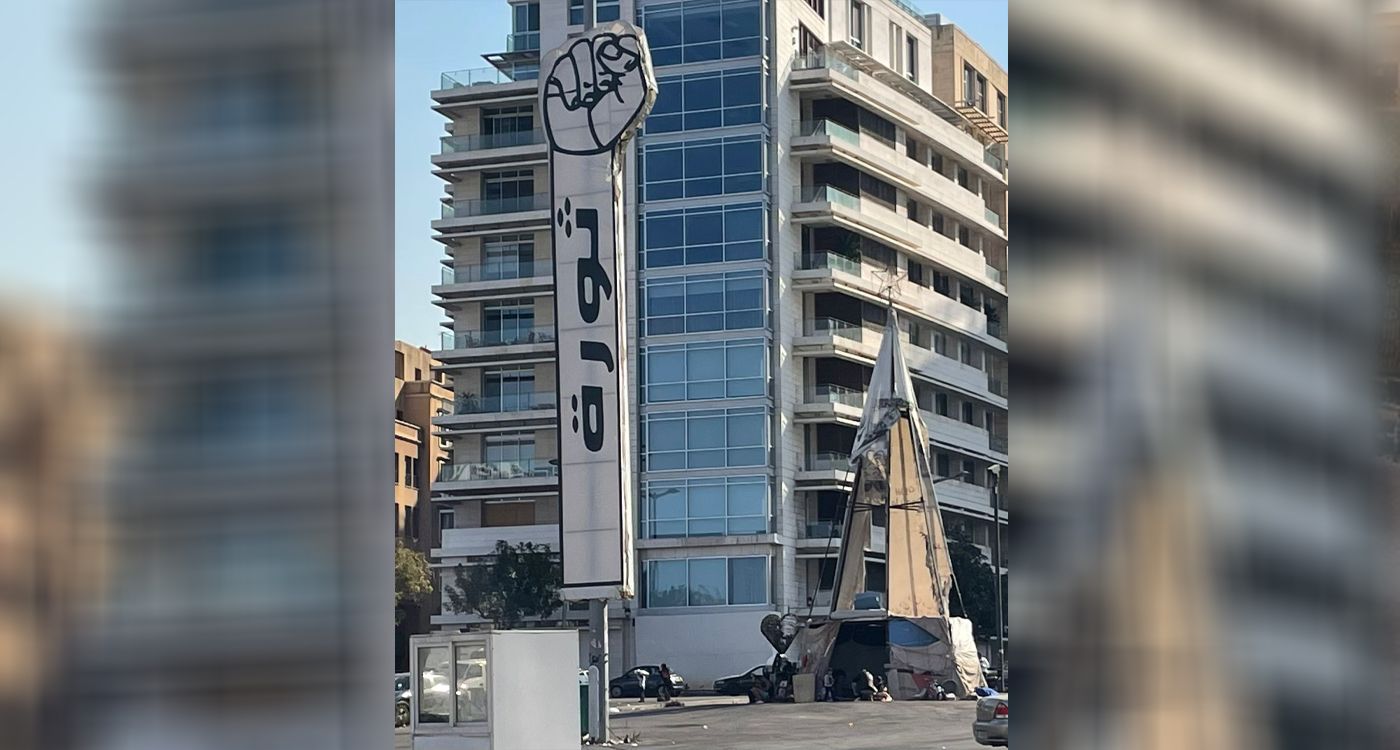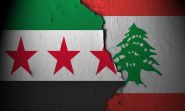
Beneath the ruins of a Christmas tree dating back to the days of feasts and prosperity in Lebanon resides a displaced family in Martyrs’ Square, Downtown Beirut.
“God bless the Christian hands that put this tree here,” shouts an old man, most likely a member of the family living under the “iron bars.”
“If this tree were not here, we would not be protected from the sun or the rain,” he adds, refusing to give his name.
Beirut’s Martyrs’ Square, which symbolized liberation and sovereignty in 2005 during the Cedar Revolution and the withdrawal of Syrian troops from Lebanon, and served as the initial spark for the 2019 revolution against corruption, is now in a state of despair.
The square was first established as a formal municipal area in the 1860s and was refurbished by the Municipality of Beirut in 1878 to serve as the city’s primary gathering spot. In 1931, it was named to honor the martyrs who were executed there during Ottoman rule. The square gained popularity in the 1950s as a location for movie theaters and coffee shops.
Under the famous “Thawra” hand lives a family of seven in a tent, poorly constructed and barely resisting even a light summer breeze.
After the Israel-Hezbollah war, residents of southern Lebanon and Beirut’s southern suburbs fled to safer regions. Those who could not afford to rent a house or room chose to stay in the square of “liberty and freedom,” yet they lack the liberty of movement and even the freedom to speak with others.
The majority of the displaced persons will not utter a word about their suffering. They will only tell you, “Thank God we are still alive.”
When asked if they have been receiving help from the Lebanese government, a 64-year-old displaced taxi driver laughs and whispers, “Forget it.”
Requesting anonymity, he recounts the story of a lady in a fancy car with food aid boxes inside. She lowered her tinted window and asked a young boy to carry a box and smile while she took a selfie with him. “At the moment she took the photo, she grabbed the box and drove off quickly,” he continues.
“If I see this woman here again, I will spit in her face,” says a young man standing next to the taxi driver, affirming his story.
What was rumored about most of the displaced persons staying in the square being of Syrian nationality is not accurate at all. After friendly chats with around 12 individuals, none identified themselves as Syrian. They requested not to have their names recorded or mentioned. Even when asked for their names off the record, no one revealed their real names, only their nicknames.
Residents of Burj al-Barajneh, Mreijeh, and Haret Hreik used to sit on the steps of al-Amine Mosque before a fence was built, allowing entry only on Fridays.
People indicate that they have seen many vehicles carrying mattresses, but none have received a mattress for free.
Due to their origins in unstable regions, residents of southern Lebanon are often uprooted every 20 years. Not being able to voice any complaints about their situation is worse than being displaced. They live under the shadow of a weak and irresponsible government and parties primarily interested in maintaining their support base and gaining political clout on a regional scale.
The faces of the displaced mirror the general sadness that pervades Martyrs’ Square. A location that once represented freedom and self-determination is now associated with grief, hopelessness, and waiting.




Comments